Alnus rubra Bong.
Red alder
The tree tag number relates to the black tree-maintenance tags, usually fixed on the trunk, 2 to 3m above ground level.
The red alder is a native of a coastal strip from South Alaska to California; it is fairly rare in the UK. It is fast growing and will reach 25m but is said to be short lived.
There are a number of alder species, but this one may be distinguished by the toothed leaves and a fine but distinctively rolled leaf margin. You need to look carefully to see this but the red alder is the only species to have it (see the photo below). The flowers are produced early in the year with long and attractive catkins appearing in January/February long before the leaves appear. The female flowers are tiny, cylindrical and reddish. The female flowers develop into green cones which eventually turn brown in Autumn and shed their seeds. The dry cones persist on the tree for a number of years.
Alders have a symbiotic relationship with a bacterium Frankia alni (previously Schinzia alni) which fixes atmospheric nitrogen. This supplies the roots with nitrogen compounds and helps the alders to thrive in soils poor in nitrogen – particularly waterlogged soils in swamps and river banks.
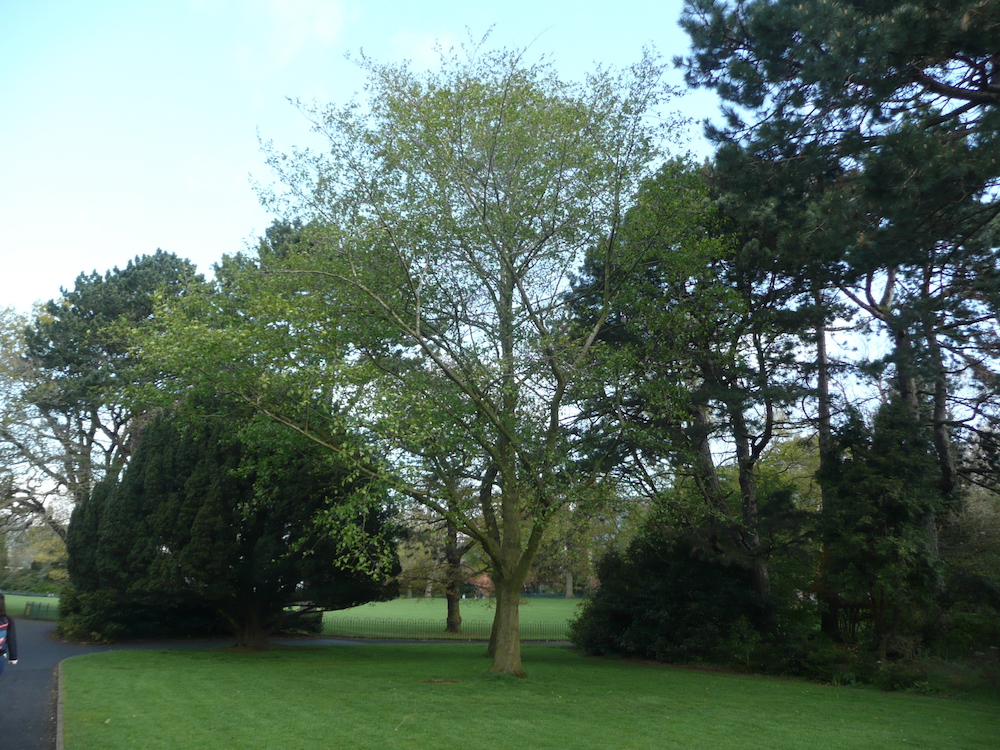


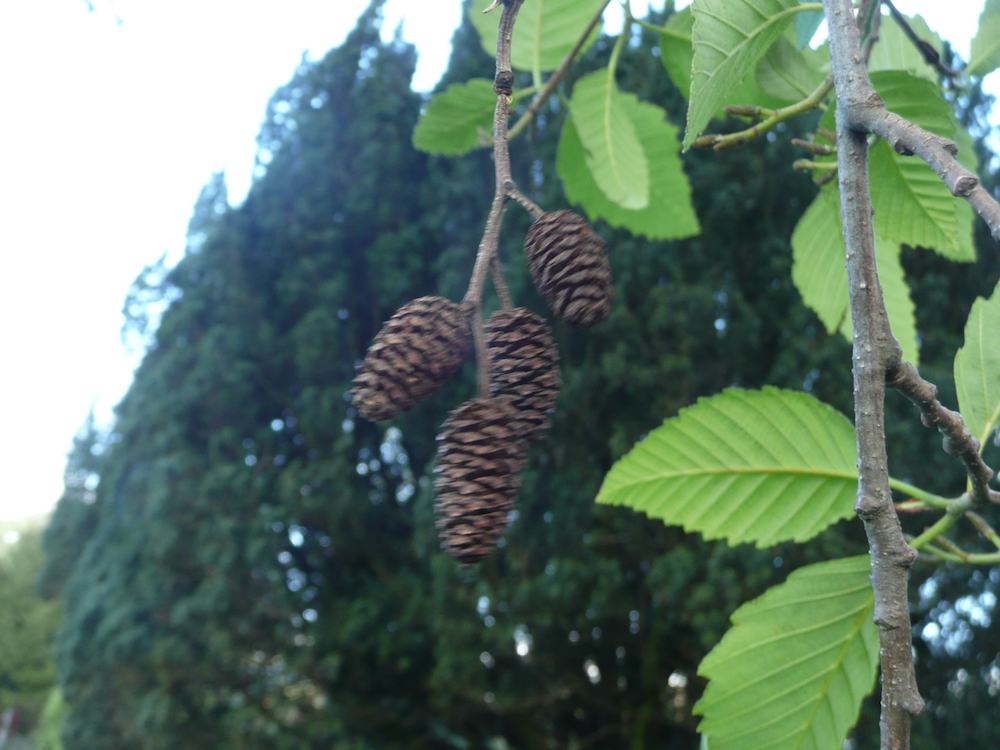
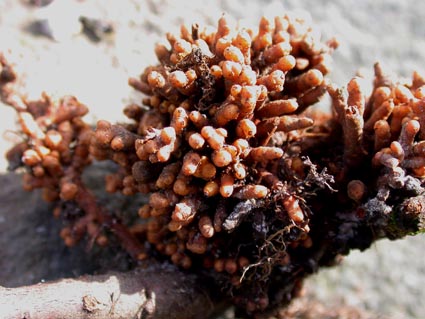
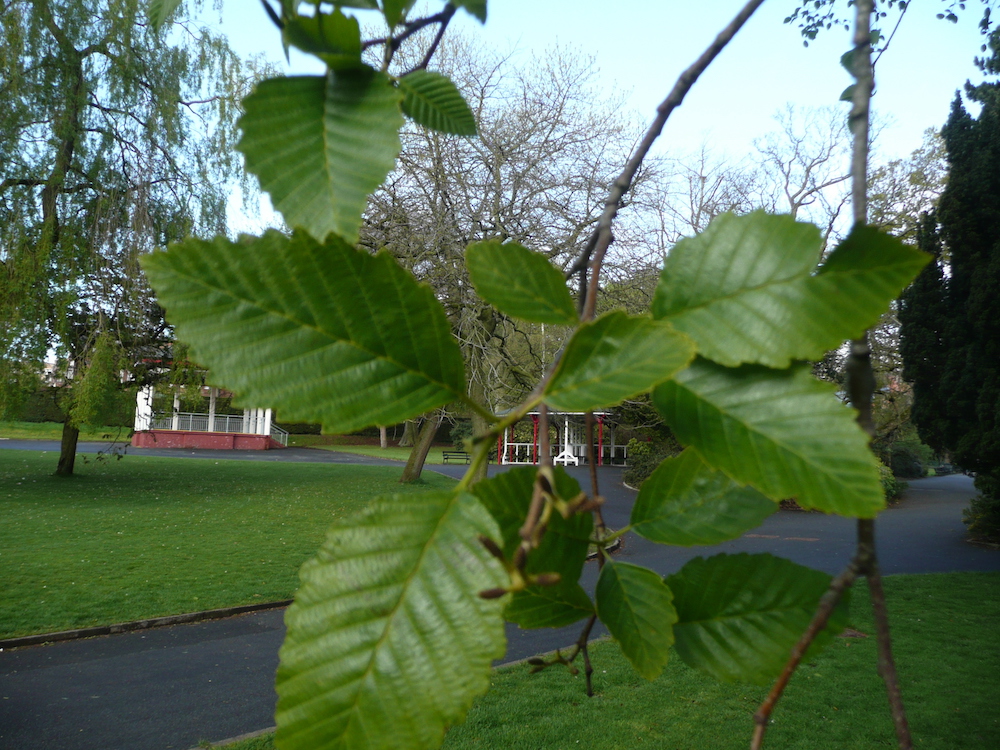
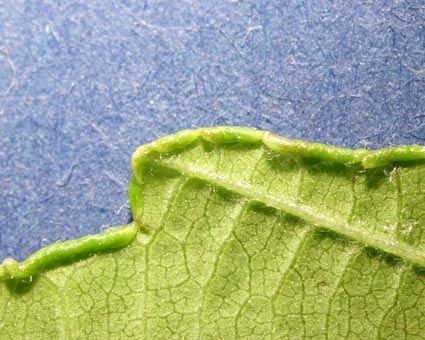
Photos taken in Belfast Botanic Gardens in 2011. Copyright: Friends of Belfast Botanic
